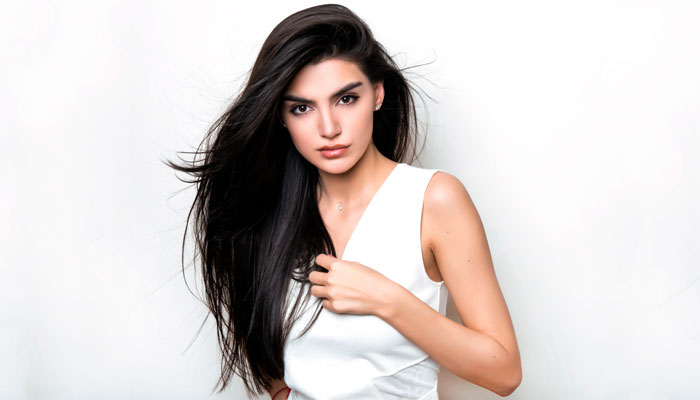
Long hair is often considered a symbol of beauty and femininity. Whether you have straight, wavy, or curly hair, achieving long and healthy locks requires dedication and proper care. Each hair type has its unique characteristics and needs. In this article, we will explore the best practices for growing long hair based on different hair types.
Straight Hair
Straight hair tends to be smooth and shiny but can also be prone to oiliness. To promote healthy hair growth, follow these tips:

Regular Trims
Although it may seem counterintuitive, getting regular trims is essential for maintaining long, healthy hair. Trimming the ends every 8-12 weeks prevents split ends from traveling up the hair shaft and causing breakage.
Gentle Shampooing
Straight hair can easily become oily, so it’s important to cleanse the scalp and hair regularly. Use a mild shampoo that won’t strip away natural oils. Avoid using hot water, as it can dry out the scalp and lead to increased oil production.
Conditioning
Apply a lightweight conditioner to the mid-lengths and ends of your hair to keep it hydrated and prevent breakage. Avoid applying conditioner to the roots, as it can weigh down the hair and make it appear greasy.
Heat Protection
Limit the use of heat styling tools like flat irons and curling irons, as excessive heat can damage straight hair. If you must use them, apply a heat protectant spray to minimize the potential damage.
Don’t use hot water
To promote healthy hair growth, it’s important to keep your hair and scalp clean. However, only use warm water because hot water might damage your hair and scalp. To promote healthy hair growth, try to select a shampoo depending on the requirements of your scalp and hair type.
Pro tip
After conditioning, give your hair a quick blast of cold water to help seal the cuticles on each strand and make it as lustrous as possible.
Eat healthy
Eat well-balanced food to promote healthy hair development from the inside out. Did you know that biotin is a natural substance that may be found in foods like salmon, eggs, and chicken? Biotin is a vitamin that is known to promote hair development. Since protein is a component of hair, it only makes sense to make sure you’re getting enough at every meal. Consider including protein-rich foods like lean meats, fish, dairy products, and tofu in your diet daily because a lack of protein has been related to hair loss. Lastly, healthy fats will guarantee that your follicles receive all the nutrition they require. Treat yourself to some avocado on toast, a nut snack, or some olive oil on your salad.
Wavy Hair
Wavy hair has a natural texture that falls between straight and curly. To encourage long and defined waves, try the following tips:

Moisture Balance
Wavy hair can be prone to frizz and dryness. Use a hydrating shampoo and conditioner to maintain moisture balance. Look for products specifically formulated for wavy or curly hair to enhance the natural wave pattern.
Detangling
Wavy hair can easily tangle, so it’s important to detangle it gently. Use a wide-toothed comb or your fingers to remove knots and tangles when the hair is damp. Start from the end and work your way up to prevent breakage.
Curl Enhancing Products
Apply styling products like mousse or curl enhancers to enhance and define your natural waves. Scrunch the products into your hair while it’s still damp and allow it to air dry or use a diffuser on low heat to minimize frizz.
Protect from Heat
Excessive heat can disrupt the natural wave pattern of wavy hair. Whenever possible, let your hair air dry instead of using heat-styling tools. If you need to use a blow dryer, opt for the lowest heat setting and use a diffuser attachment.
Curly Hair
Curly hair tends to be drier and more prone to frizz. To grow long, luscious curls, consider the following practices:

Hydration is Key
Curly hair needs extra moisture to stay healthy. Use a sulfate-free shampoo and a rich, moisturizing conditioner. Look for products containing ingredients like shea butter or coconut oil to nourish and hydrate your curls.
Deep Conditioning
Treat your curly hair to regular deep conditioning treatments to replenish moisture and minimize frizz. Apply a deep conditioner once a week, comb it through your hair, and leave it on for the recommended time before rinsing.
Hands-Off Styling
Curly hair is best styled when wet or damp to maintain its natural shape. Avoid combing or brushing curly hair when it’s dry, as it can lead to frizz and breakage. Instead, use your fingers or a wide-toothed comb to detangle and style your hair while it’s wet.
Satin or Silk Pillowcase
Switching to a satin or silk pillowcase can reduce friction and minimize frizz while you sleep. These fabrics are gentle on the hair and help retain moisture, preventing your curls from drying out.
In conclusion, growing long hair requires understanding and catering to the unique needs of your hair type. Whether you have straight, wavy, or curly hair, following the best practices outlined for your specific hair type will help you achieve healthy, long locks. Remember to be patient, as hair growth takes time, and maintain a consistent hair care routine to nurture your hair from root to tip.
